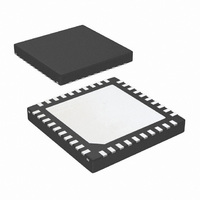DP83848TSQ/NOPB National Semiconductor, DP83848TSQ/NOPB Datasheet - Page 16

DP83848TSQ/NOPB
Manufacturer Part Number
DP83848TSQ/NOPB
Description
IC TXRX ETHERNET PHYTER 40-LLP
Manufacturer
National Semiconductor
Type
Transceiverr
Specifications of DP83848TSQ/NOPB
Number Of Drivers/receivers
1/1
Protocol
Ethernet
Voltage - Supply
3 V ~ 3.6 V
Mounting Type
Surface Mount
Package / Case
40-LLP
Data Rate
100Mbps
Supply Voltage Range
3V To 3.6V
Logic Case Style
LLP
No. Of Pins
40
Operating Temperature Range
-40°C To +85°C
Msl
MSL 2 - 1 Year
Filter Terminals
SMD
Rohs Compliant
Yes
Data Rate Max
10Mbps
Driver Case Style
LLP
For Use With
DP83848T-MAU-EK - BOARD EVALUATION DP83848T
Lead Free Status / RoHS Status
Lead free / RoHS Compliant
Other names
DP83848TSQTR
Available stocks
Company
Part Number
Manufacturer
Quantity
Price
Company:
Part Number:
DP83848TSQ/NOPB
Manufacturer:
TI
Quantity:
2 000
Company:
Part Number:
DP83848TSQ/NOPB
Manufacturer:
LT
Quantity:
807
www.national.com
2.1.3 Auto-Negotiation Parallel Detection
The DP83848H supports the Parallel Detection function as
defined in the IEEE 802.3u specification. Parallel Detection
requires both the 10 Mb/s and 100 Mb/s receivers to moni-
tor the receive signal and report link status to the Auto-
Negotiation function. Auto-Negotiation uses this informa-
tion to configure the correct technology in the event that the
Link Partner does not support Auto-Negotiation but is
transmitting link signals that the 100BASE-TX or 10BASE-
T PMAs recognize as valid link signals.
If the DP83848H completes Auto-Negotiation as a result of
Parallel Detection, bit 5 or bit 7 within the ANLPAR register
will be set to reflect the mode of operation present in the
Link Partner. Note that bits 4:0 of the ANLPAR will also be
set to 00001 based on a successful parallel detection to
indicate a valid 802.3 selector field. Software may deter-
mine that negotiation completed via Parallel Detection by
reading a zero in the Link Partner Auto-Negotiation Able bit
once the Auto-Negotiation Complete bit is set. If configured
for parallel detect mode and any condition other than a sin-
gle good link occurs then the parallel detect fault bit will be
set.
2.1.4 Auto-Negotiation Restart
Once Auto-Negotiation has completed, it may be restarted
at any time by setting bit 9 (Restart Auto-Negotiation) of the
BMCR to one. If the mode configured by a successful Auto-
Negotiation loses a valid link, then the Auto-Negotiation
process will resume and attempt to determine the configu-
ration for the link. This function ensures that a valid config-
uration is maintained if the cable becomes disconnected.
A renegotiation request from any entity, such as a manage-
ment agent, will cause the DP83848H to halt any transmit
data and link pulse activity until the break_link_timer
expires (~1500 ms). Consequently, the Link Partner will go
into link fail and normal Auto-Negotiation resumes. The
DP83848H
break_link_timer has expired by issuing FLP (Fast Link
Pulse) bursts.
will
resume
Auto-Negotiation
after
the
16
2.1.5 Enabling Auto-Negotiation via Software
It is important to note that if the DP83848H has been initial-
ized upon power-up as a non-auto-negotiating device
(forced technology), and it is then required that Auto-Nego-
tiation or re-Auto-Negotiation be initiated via software,
bit 12 (Auto-Negotiation Enable) of the Basic Mode Control
Register (BMCR) must first be cleared and then set for any
Auto-Negotiation function to take effect.
2.1.6 Auto-Negotiation Complete Time
Parallel detection and Auto-Negotiation take approximately
2-3 seconds to complete. In addition, Auto-Negotiation with
next page should take approximately 2-3 seconds to com-
plete, depending on the number of next pages sent.
Refer to Clause 28 of the IEEE 802.3u standard for a full
description of the individual timers related to Auto-Negotia-
tion.
2.2 Auto-MDIX
When enabled, this function utilizes Auto-Negotiation to
determine the proper configuration for transmission and
reception of data and subsequently selects the appropriate
MDI pair for MDI/MDIX operation. The function uses a ran-
dom seed to control switching of the crossover circuitry.
This implementation complies with the corresponding IEEE
802.3 Auto-Negotiation and Crossover Specifications.
Auto-MDIX is enabled by default and can be configured via
strap or via PHYCR (0x19h) register, bits [15:14].
Neither Auto-Negotiation nor Auto-MDIX is required to be
enabled in forcing crossover of the MDI pairs. Forced
crossover can be achieved through the FORCE_MDIX bit,
bit 14 of PHYCR (0x19h) register.
Note: Auto-MDIX will not work in a forced mode of opera-
tion.











